Budapest: A 5-Day Itinerary to Explore the City
Budapest is this amazing city with two totally different personalities. Historic Buda sits on one side of the Danube River, while busy Pest sprawls across the other side. Five days is perfect for seeing the best of both worlds, from relaxing in thermal baths that are hundreds of years old to exploring fairytale castles and checking out those famous ruin bars everyone talks about.
We've put together this guide to help you see the most important stuff while still having time to enjoy the local food and discover those random moments that make trips really special. You'll get to explore both sides of the river, eat tons of Hungarian food, take a cruise past all the lit-up buildings at night, and have plenty of time for the unexpected adventures that happen when you're just wandering around.
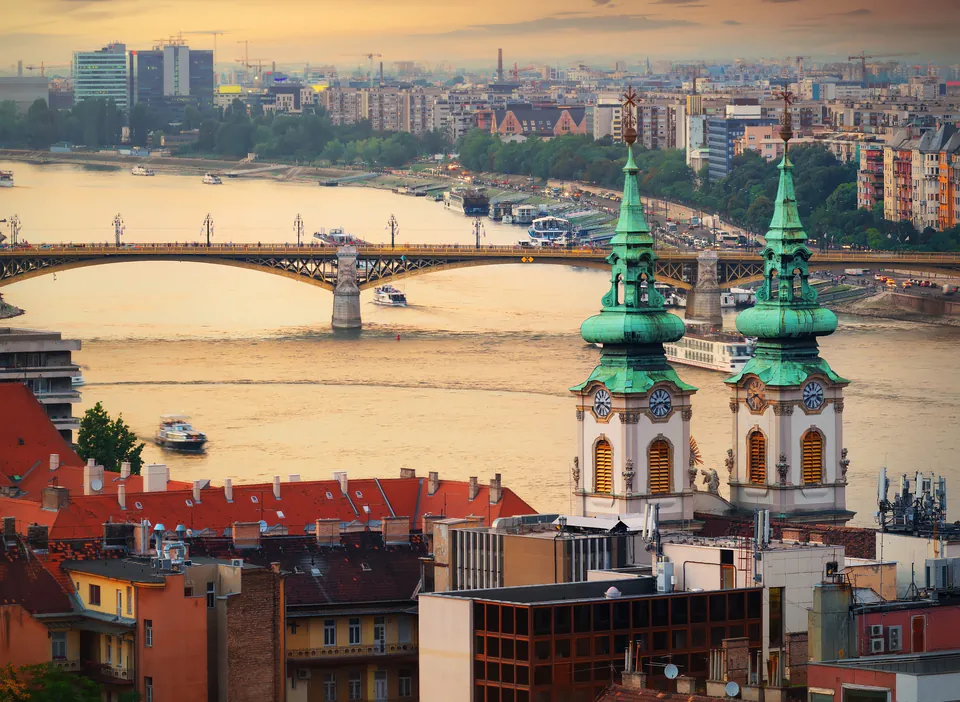
Day 1: Royal Stuff on Buda Side and Castle Hill Magic
Start your Budapest trip on the Buda side, where old medieval streets wind around royal palaces and Gothic church spires stick up into the sky. We always tell people to begin at Clark Ádám Square, where you can catch the cute Buda Castle Funicular up to Castle Hill. This fun little ride runs every 5-10 minutes from 8:00 AM to 10:00 PM, and return tickets cost around 5000 HUF.
Buda Castle is huge and sits right on top of the hill. Inside you'll find the Hungarian National Gallery and Budapest History Museum. The courtyards and gardens are free to walk around, but you need separate tickets for the museum stuff. Just walking through the royal courtyards is pretty cool though, and you can really feel the history of all the Hungarian kings who lived here.
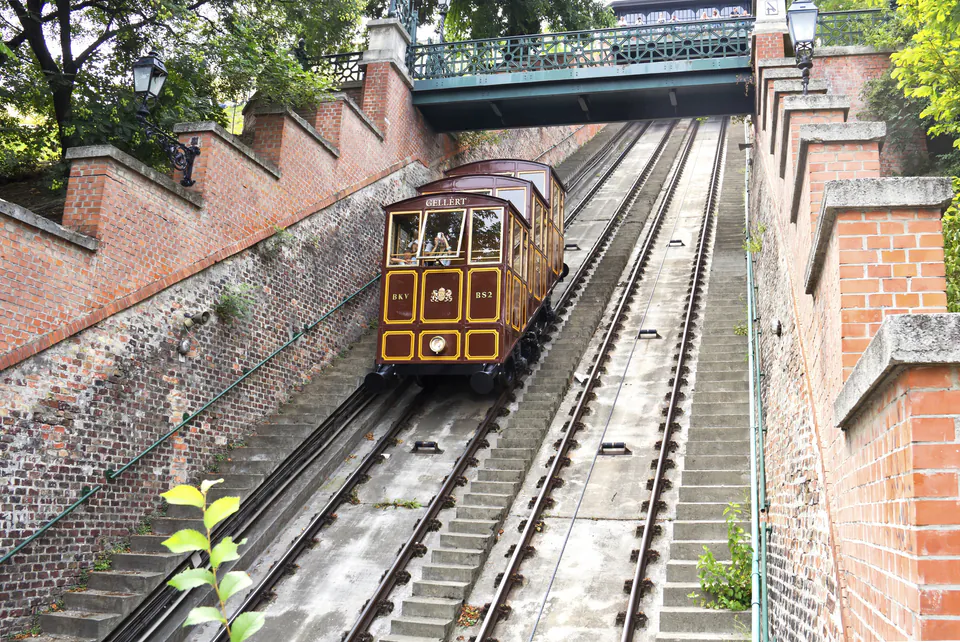
Matthias Church is probably the most recognizable building on Castle Hill because of its colorful ceramic roof tiles that really shine in the sunlight. This Gothic church has seen so many royal coronations and weddings throughout Hungarian history. It's usually open Monday to Friday from 9:00 AM to 5:00 PM, Saturday from 9:00 AM to 12:00 PM, and Sunday from 1:00 PM to 5:00 PM, though sometimes religious services change these hours. Entry costs around 2500 HUF.
For lunch, there are several nice restaurants around the Castle District. Many have traditional Hungarian food with views toward the Danube. Ruszwurm Confectionery on Szentháromság utca is special because it's one of Budapest's oldest pastry shops. They make incredible cakes and have been around for centuries.
The afternoon is perfect for Fisherman's Bastion, which looks like something from a fairy tale. These neo-Gothic towers and decorative turrets frame some of the best panoramic views in Europe. The lower ramparts are free all year, but the upper terraces need tickets (around 1500 HUF). However, if you visit early morning before 9:00 AM or evening after 7:00 PM, you can often get in free.
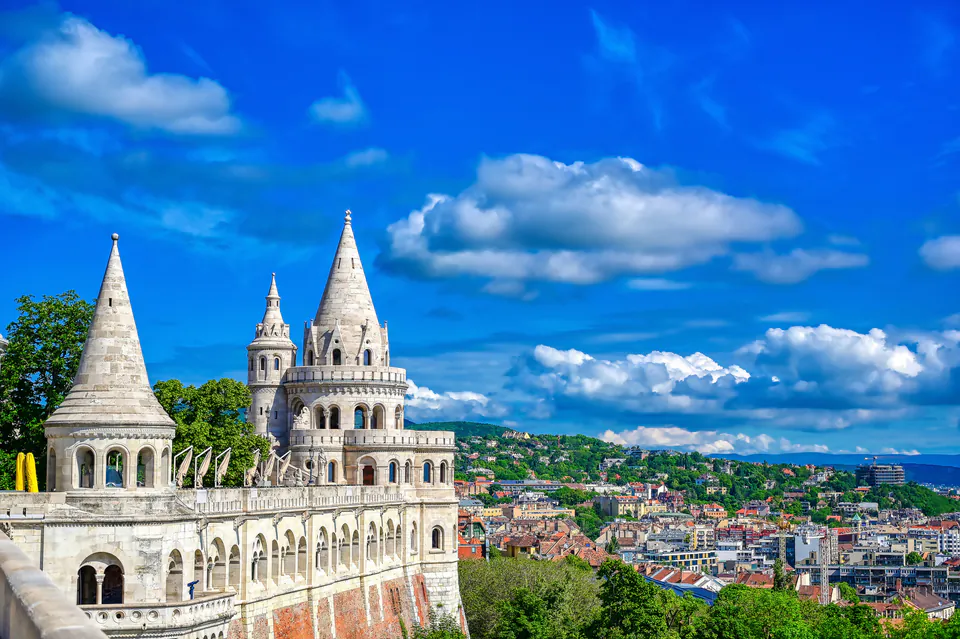
Spend the rest of your afternoon walking around Castle Hill's cobblestone streets. The colorful old buildings and hidden courtyards are really charming. If you're feeling adventurous, there are guided tours of underground caves beneath Castle Hill that show you this fascinating network of tunnels people used throughout history, including as bomb shelters during the war.
When evening comes, find a good spot on Castle Hill to watch the sunset over Pest. It's truly magical and photographers love this view. The whole city lights up below you like glittering jewels, and the Danube reflects all the golden light.
Day 2: Pest's Amazing Buildings, Churches, and River Views
Cross over to the Pest side to see some of Europe's most incredible architecture. Start early at the Hungarian Parliament Building, this massive Gothic Revival building that dominates the riverbank with its 691 rooms and huge central dome. This architectural masterpiece is one of Europe's oldest legislative buildings and was once the world's largest building.
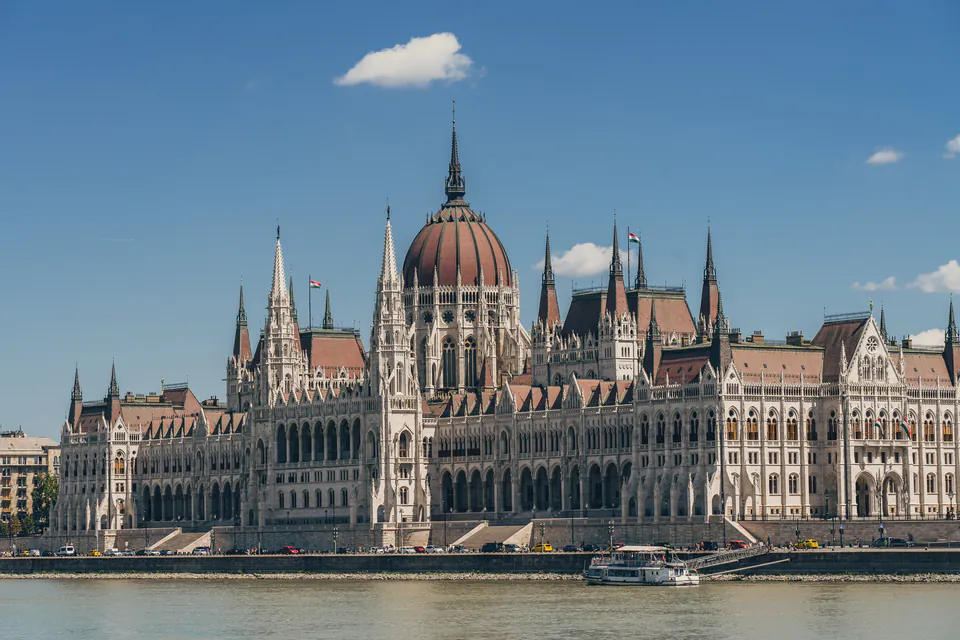
You can only see inside by taking a guided tour, which is the only way to see the fancy Session Hall, Grand Staircase, and the precious Hungarian Holy Crown and Crown Jewels. We always recommend booking tickets online through the official seller (jegymester.hu) way in advance. Sometimes you need to book months ahead during busy season. Tours last about 45 minutes and come in multiple languages, usually from 8:00 AM to 6:00 PM (April-October) or 8:00 AM to 4:00 PM (November-March).
Walk over to St. Stephen's Basilica, Budapest's biggest church and a monument to both faith and Hungarian culture. It's named after Hungary's first king, and the church houses his preserved relic - the mummified right hand called the Holy Right. The dome has amazing 360-degree city views that you can reach by elevator or climbing just over 300 steps. We suggest visiting early to avoid long lines, especially for the dome.
The basilica is typically open Monday to Saturday from 9:00 AM to 5:45 PM and Sunday from 1:00 PM to 5:45 PM. The Panorama Terrace usually has longer hours from 9:00 AM to 7:00 PM daily.
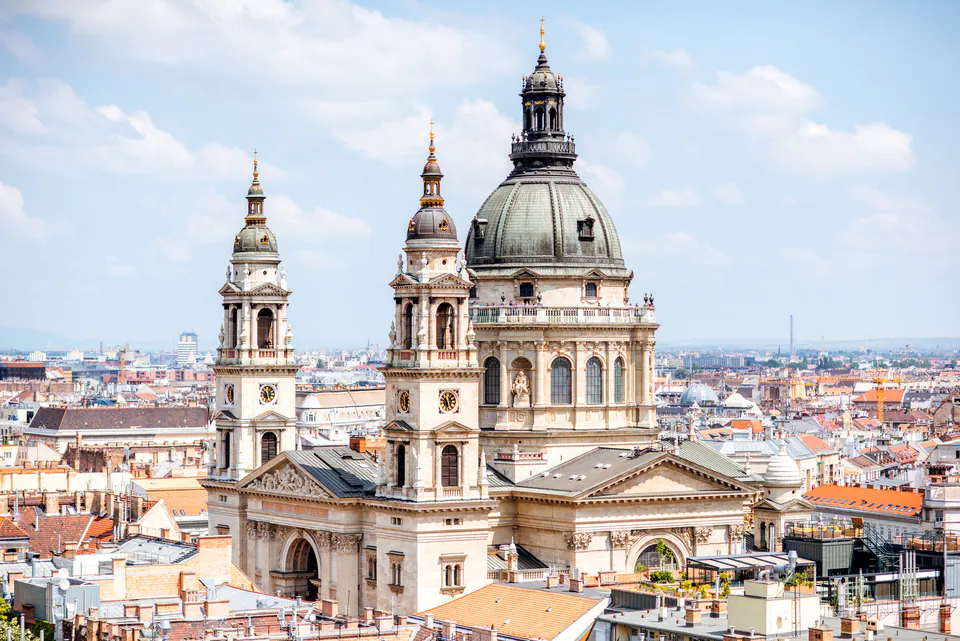
After lunch near St. Stephen's Square (there are tons of cafes and restaurants with good options), spend your afternoon visiting the Shoes on the Danube Bank memorial. This really moving installation of 60 pairs of iron shoes remembers Jewish victims who were shot into the Danube during World War II. People often leave flowers and candles here to remember.
Continue to the famous Széchenyi Chain Bridge, the first permanent bridge between Buda and Pest. This 19th-century engineering marvel represents the city's unity and has fantastic views of both riverbanks as you walk across it. The bridge's stone lions and elegant suspension design make it one of Europe's most photographed bridges.
Start exploring the grand Andrássy Avenue, which people often compare to Paris's Champs-Élysées. This UNESCO World Heritage boulevard has stunning Neo-Renaissance mansions, upscale shops, and cultural places including the magnificent Hungarian State Opera House.
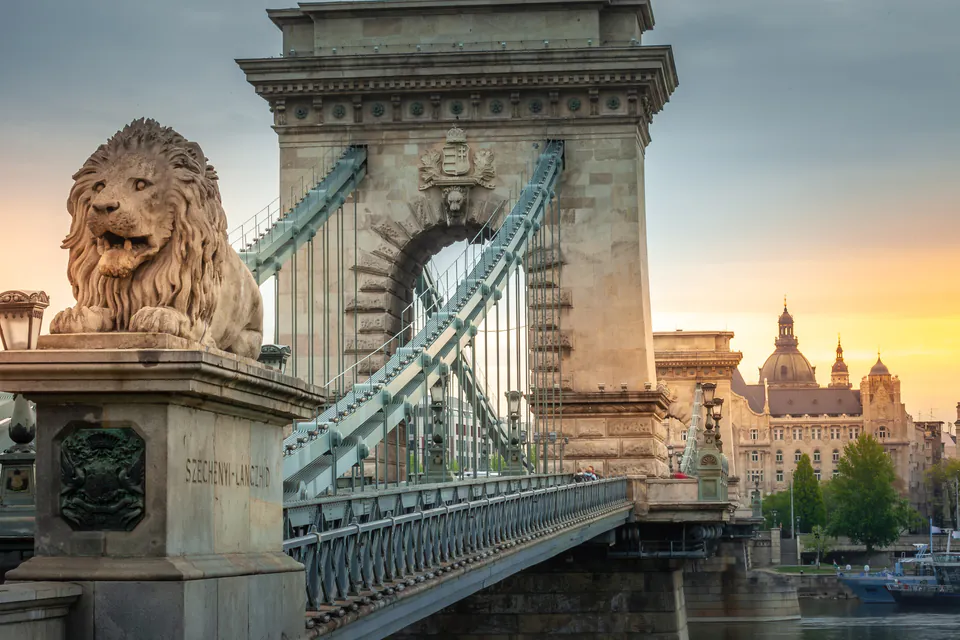
When evening comes, treat yourself to a Danube River Cruise. This is absolutely a highlight that gives you magical views of Budapest's lit-up landmarks. Different companies have options from basic sightseeing tours with audio guides to romantic dinner cruises with live music. You'll glide past the spectacularly lit Parliament Building, Buda Castle, Matthias Church, Fisherman's Bastion, and under the city's elegant bridges. Cruises usually last 1-2.5 hours with frequent departures, ranging from around €10 for basic tours to higher prices for dinner options.
Day 3: Thermal Bath Heaven, Market Food, and Jewish Quarter History
Get into Budapest's legendary thermal bath culture, a tradition that goes back from Roman times through the Ottoman era to today's grand bathhouses. Budapest is called the "City of Spas," so you have several magnificent options for your morning soak.
Széchenyi Thermal Baths in City Park is one of Europe's largest spa complexes. This Neo-Baroque yellow palace has 15 indoor and 3 large outdoor pools, creating an unforgettable experience. The famous image of locals playing chess in steaming outdoor waters, even during winter, really shows Budapest's unique spa culture. Opening hours are typically weekdays 7:00 AM to 8:00 PM and weekends 8:00 AM to 8:00 PM, with day tickets costing around 11,000-13,500 HUF.
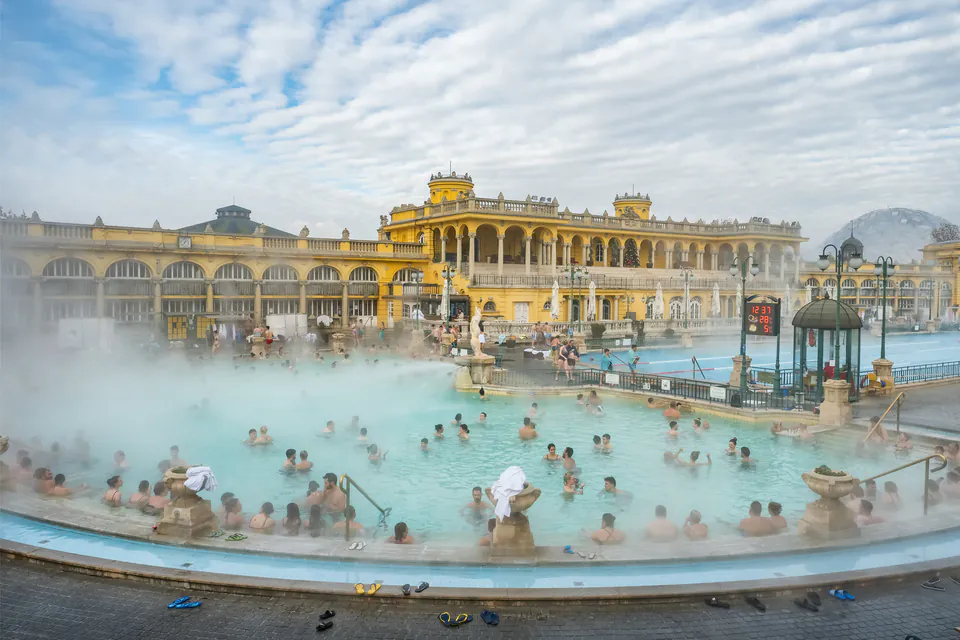
Gellért Thermal Baths gives you an Art Nouveau masterpiece experience inside the famous Hotel Gellért. Beautiful Zsolnay tiles, mosaics, stained glass windows, and sculptures create an elegant atmosphere. The place has various thermal pools, a swimming pool, and seasonal outdoor wave pool. It's open daily from 9:00 AM to 7:00 PM with similar pricing to Széchenyi.
Rudas Baths has something completely different with its 16th-century octagonal Turkish bath, modern wellness section, and famous rooftop hot tub with stunning panoramic views. The Turkish section keeps traditional single-sex days (men-only certain weekdays, women-only Tuesdays) with mixed bathing on weekends.
Remember to bring your swimsuit, towel (you can rent them but it's easier to bring your own), and flip-flops. When you enter, you'll get an electronic bracelet that works as your locker key. For a more peaceful experience, visit on weekdays or early mornings.
After your thermal experience, head to the Great Market Hall, Budapest's largest and oldest indoor market. This architectural gem by Samu Pecz has a stunning steel frame structure topped with colorful Zsolnay tiles. The ground floor is full of fresh produce, Hungarian paprika in countless varieties, famous local salamis, and traditional kolbász sausages.
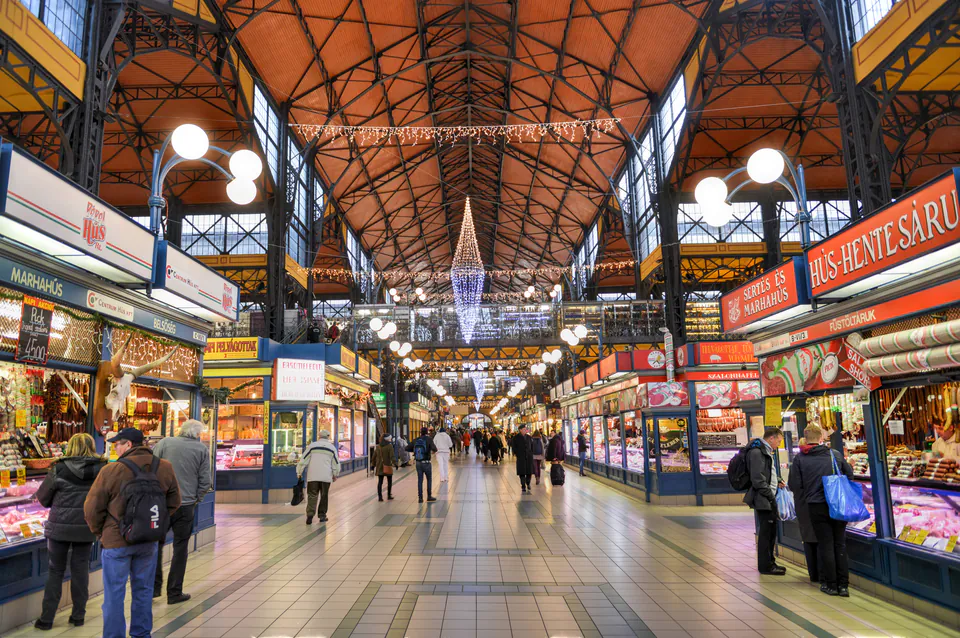
The first floor has tons of souvenirs, traditional Hungarian handicrafts, and a busy food court with classics like lángos (deep-fried dough with toppings), strudels, and hearty goulash. The basement has a fish market and impressive pickled vegetable selection. The market is open Monday to Saturday (typically Mon-Fri 6:00 AM to 6:00 PM, Sat 6:00 AM to 3:00 PM or 4:00 PM), closed Sundays and public holidays.
Evening brings exploration of the historic Jewish Quarter (District VII), a fascinating neighborhood that mixes sad history with vibrant contemporary culture. Start at the magnificent Dohány Street Synagogue, Europe's largest and the world's second-largest synagogue. This Moorish Revival architectural marvel houses the Hungarian Jewish Museum, Heroes' Temple, Jewish Cemetery, and the moving Raoul Wallenberg Holocaust Memorial Park with the Tree of Life sculpture.
The synagogue complex is typically open Sunday-Thursday 10:00 AM to 6:00 PM or 8:00 PM (shorter Friday hours, closed Saturdays), with entrance fees around 5000 HUF. Guided tours give you valuable historical context.
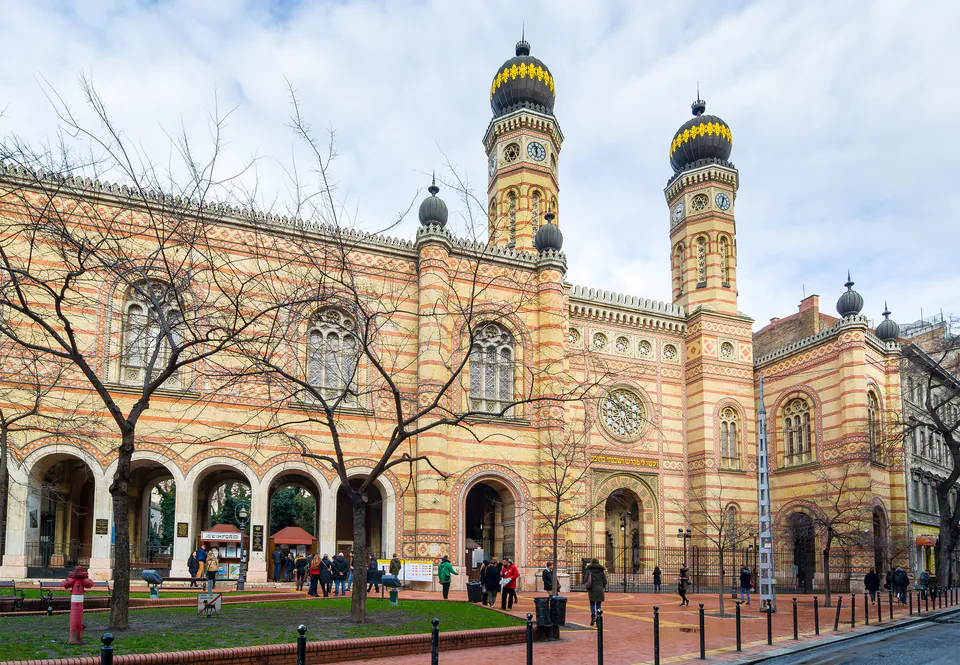
For dinner, the Jewish Quarter has amazing options like Mazel Tov, a stylish ruin bar/restaurant with Middle Eastern and Israeli-inspired food in a beautiful plant-filled courtyard, or Kőleves Vendéglő, known for its charming garden and modern Hungarian classics.
End your evening experiencing Budapest's unique ruin bar scene. These atmospheric places occupy formerly run-down pre-war buildings, filled with eclectic mismatched furniture and quirky art. Szimpla Kert, the original and most famous, sprawls through multiple rooms with weird decor, though it can get crowded and loud. Kőleves Kert has a more relaxed atmosphere with a lovely outdoor terrace, while Mazel Tov gives you a more curated, upscale experience.
Day 4: Island Getaway, Amazing Views, and Cultural Fun
Escape the city bustle with a morning visit to Margaret Island, a peaceful 2.5-kilometer green oasis in the heart of the Danube. This car-free place has perfect relaxation and recreation opportunities. Get to the island via Tram 4 or 6 to Margaret Bridge (southern entrance) or Bus 26, which runs through the island.
The island has a 5.3-kilometer rubberized running track that goes around its edge with lovely river views. Rent bicycles, pedal carts (bringo carts), or electric scooters to explore at your own pace. Discover the peaceful Japanese Garden with koi ponds and pagoda, or time your visit for the spectacular Musical Fountain shows near the Margaret Bridge entrance.

The Musical Fountain has choreographed water shows to music ranging from classical to modern hits five times daily during spring through autumn (typically 10:30 AM, 5:00 PM, 6:00 PM, 7:30 PM, 9:00 PM), with colorful lights at dusk. Explore historical ruins including a 13th-century Dominican Convent where Princess Margaret lived, and a Franciscan Church.
The Art Nouveau Water Tower has panoramic views from its top (when open for climbing) and often hosts exhibitions. Next to it stands an open-air theatre with summer performances. Families enjoy the small Petting Zoo with deer, peacocks, and other animals, while the Palatinus Baths complex has thermal pools, wave pools, and slides year-round.
After lunch on the island or returning to the mainland, climb Gellért Hill for Budapest's most stunning views. This prominent cliff on the Buda side has multiple walking paths (wear comfortable shoes for steep, uneven terrain) or take Bus 27 from Móricz Zsigmond körtér closer to the top.
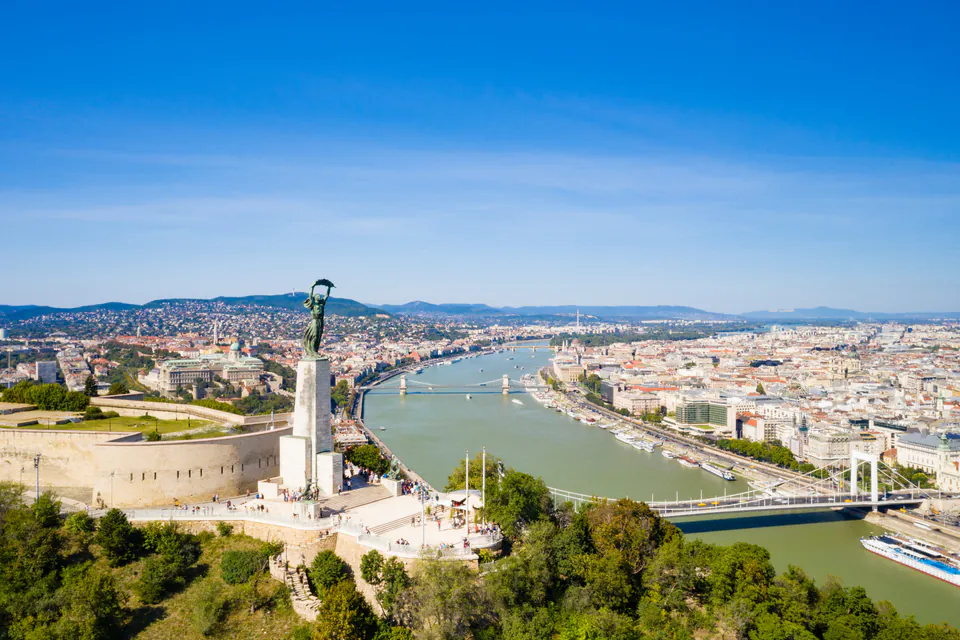
At the top, the striking Liberty Statue dominates the skyline and is visible throughout the city. Originally built to commemorate Soviet liberation from Nazi rule, it now represents freedom more broadly. The massive 19th-century Citadella fortress was built by Habsburg Austrians after the 1848 Hungarian Revolution and has unbeatable panoramic views of the Danube, its bridges, the Parliament, Buda Castle, and the sprawling city. While the fortress interior might be under renovation, the outdoor areas and viewpoints stay freely accessible 24/7.
Evening brings high culture at the Hungarian State Opera House on Andrássy Avenue. This fancy Neo-Renaissance building is one of the world's most beautiful opera houses, famous for exceptional acoustics and lavish interiors. After major refurbishment, it reopened in 2022 more magnificent than ever.
Choose between attending a performance (book well ahead) or taking a guided tour. Sixty-minute tours run daily in English (usually 1:30 PM, 3:00 PM, and 4:30 PM), often including delightful mini-concerts by opera singers. Tour tickets cost around 10,500 HUF and can be booked through the Opera's official website.
Day 5: Museums, Cool Hidden Spots, and Final Food Adventures
Your last day gives you chances to dive deeper into Budapest's cultural treasures. Pick a museum based on what you're interested in:
The Hungarian National Museum covers comprehensive Hungarian history from ancient times to modern day, with treasures like the priceless Hungarian Coronation Mantle. Open Tuesday to Sunday, 10:00 AM to 6:00 PM (closed Mondays), with full-price tickets around 3500 HUF.

The House of Terror Museum on Andrássy Avenue sits in the former headquarters of both Nazi Arrow Cross party and Communist secret police. This powerful, often intense museum looks at Hungary's brutal 20th-century dictatorships and remembers their victims. Open Tuesday to Sunday, 10:00 AM to 6:00 PM (closed Mondays).
The Museum of Fine Arts at Heroes' Square has extensive international art collections from Egyptian antiquities to European Old Masters, making it essential for art lovers.
Keep exploring Andrássy Avenue if you haven't fully experienced this UNESCO World Heritage boulevard, maybe visiting the Hungarian State Opera House for a tour if you missed it yesterday.
Experience Budapest's legendary café culture at one of its historic Grand Cafes. Café Gerbeaud on Vörösmarty tér has served traditional cakes and pastries since 1858. They're famous for Gerbeaud slice and Dobos torte in elegant, old-world surroundings. New York Café gets called "the world's most beautiful café" and dazzles with lavish gilded Rococo interiors, though it's tourist-focused and pricey. Central Grand Café has romantic old-world decor with excellent food and service.
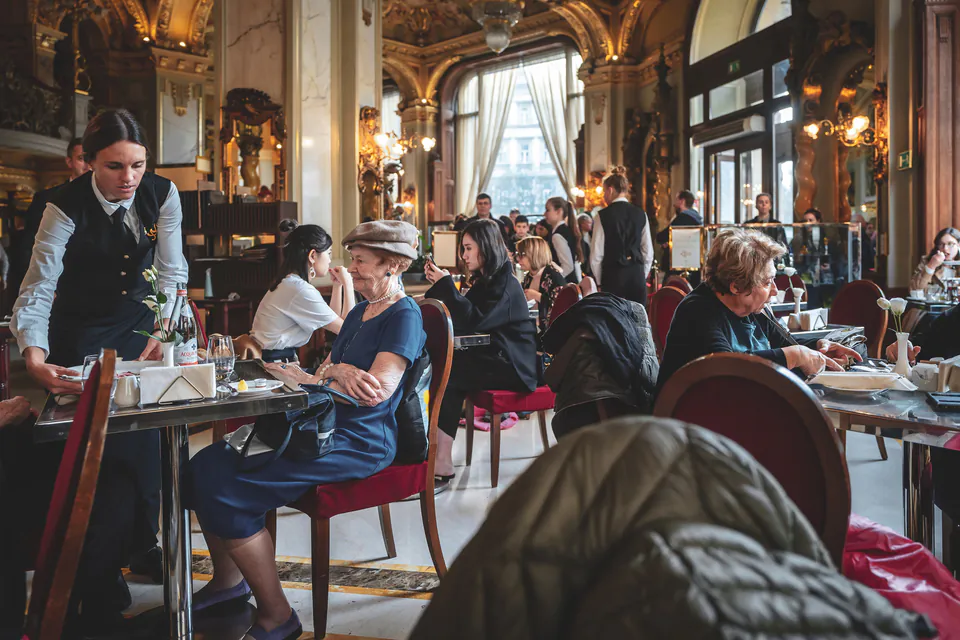
Spend your final afternoon collecting souvenirs. Váci utca, Budapest's famous pedestrian shopping street, has international brands and numerous souvenir shops, though prices can be tourist-focused. For authentic local products, go back to the Great Market Hall's upper floor for paprika, Hungarian wines, embroidered textiles, and traditional handicrafts.
Explore Vörösmarty tér (Vörösmarty Square), an elegant square at Váci utca's northern end. It's home to Café Gerbeaud and the famous Budapest Christmas Fair during winter.
5-Day Budapest Itinerary Overview
| Day | Main Focus | Key Highlights | Evening Activity |
|---|---|---|---|
| Day 1 | Buda Castle Hill | Buda Castle, Matthias Church, Fisherman's Bastion | Sunset views from Castle Hill |
| Day 2 | Pest Landmarks | Parliament, St. Stephen's Basilica, Chain Bridge | Danube River Cruise |
| Day 3 | Thermal Baths & Jewish Quarter | Széchenyi Baths, Great Market Hall, Dohány Synagogue | Ruin bars experience |
| Day 4 | Island & Hills | Margaret Island, Gellért Hill, Liberty Statue | Hungarian State Opera |
| Day 5 | Culture & Farewell | Museums, Grand Cafés, Shopping | Final Hungarian dinner |
End your Budapest adventure with a final Hungarian drink. Maybe try a shot of Pálinka (fruit brandy) or a glass of local wine while thinking about your incredible journey through this magnificent city. Whether you're heading to the airport or continuing your travels, you'll carry memories of Budapest's stunning beauty, rich history, and warm hospitality.